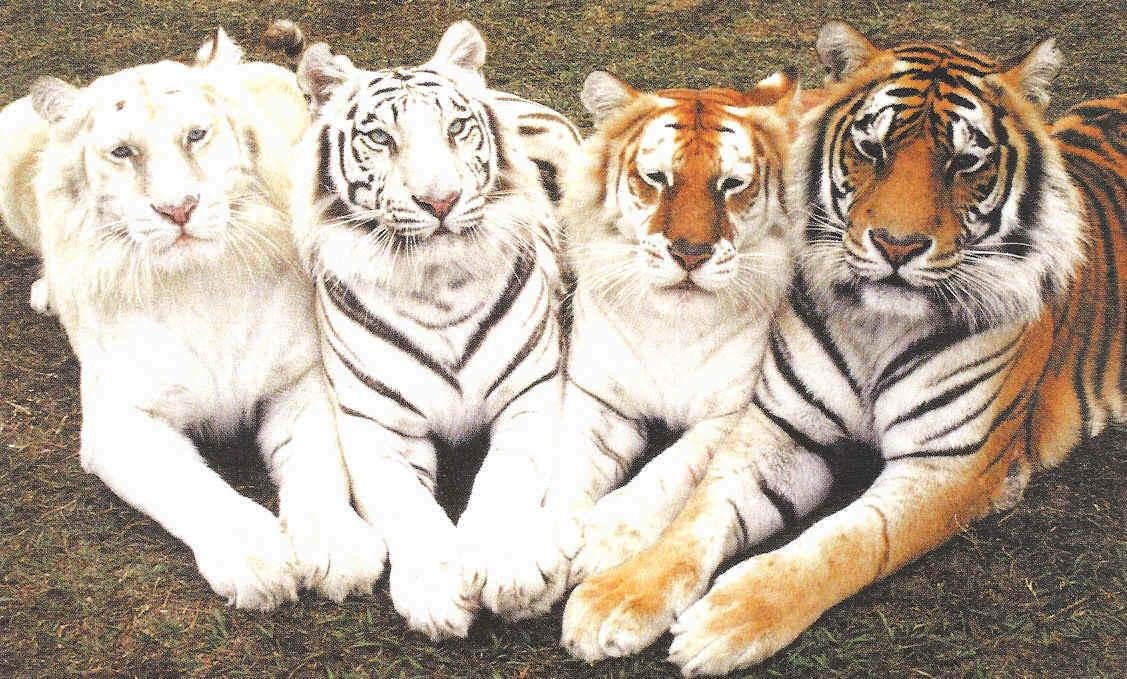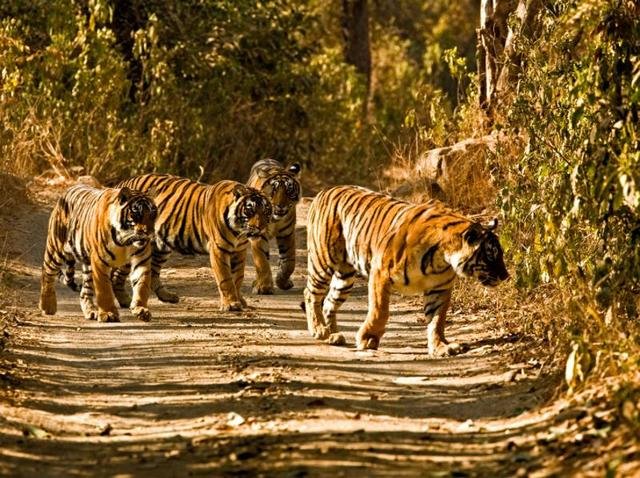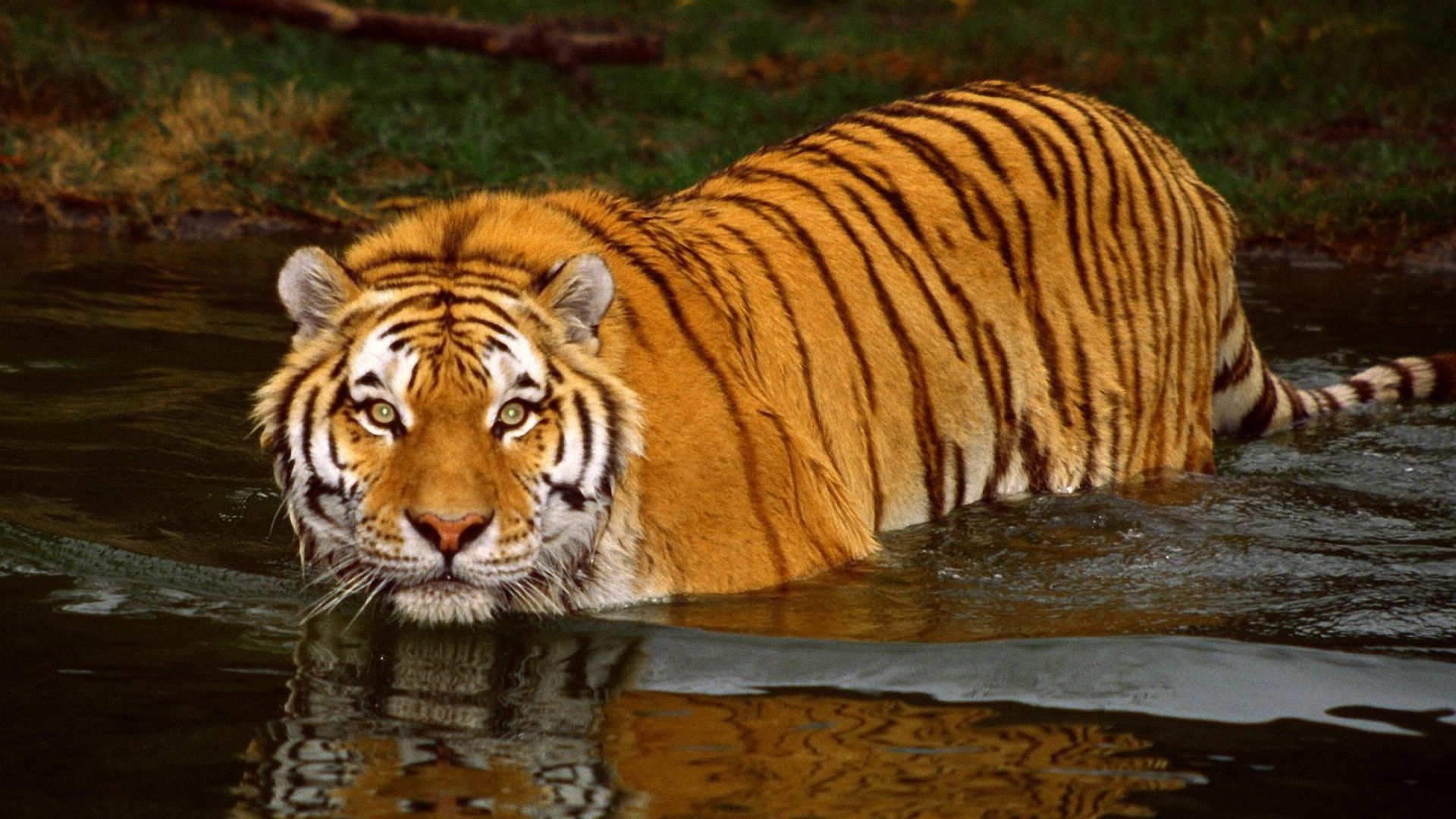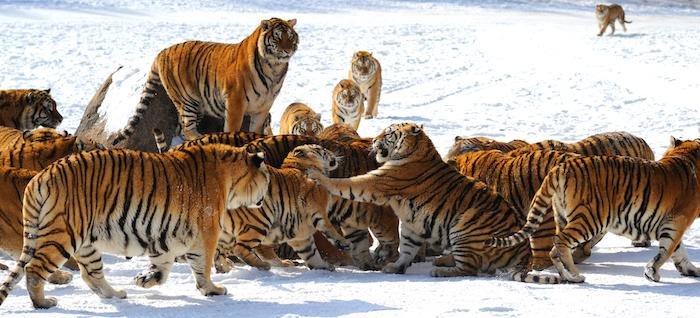Tigers are one of the mightiest animals and have fascinated mankind since forever. They have inspired literature, myths, legends, folklore, arts and films. However, man being the selfish specie he is brought misery to the life of these wonderful creatures. Tiger population has dwindled around the world due to several natural and man-made factors. Sadly, it was not until the 21st century that governments across the world began to realize how serious an issue it was and took steps in that direction. Now, many countries where the tiger species are still found are taking serious steps towards its conservation. Here are a few facts that will tell you the reduced condition of these mighty animals, but also show you that there is still a ray of hope.
1. Today, there are five subspecies of tiger: Bengal, South China, Indochinese, Sumatran and Siberian with three others already extinct – Caspian, Bali and Javan.

2. In 2016, wildlife conservation group at WWF declared that world’s count of wild tigers has risen for the first time in a century.

3. India’s conservation efforts have brought the tiger population up by 30 percent
Tiger population is dwindling everywhere in the world, but for India. Latest tiger census states that the tiger population is up by 30 percent in India.

4. India is home to 70 percent of the world’s tigers. It is one of the only places in the world where the number of tiger individuals is actually rising.

5. In 2008, the tiger population in India was down to merely 1,411. Since then, the numbers have incredibly risen to a substantial 2,226 in 2014.

6. Government is taking initiative to relocate people near forest areas for tiger conservation
Due to poaching, logging and other such factors, the tiger species is one the most endangered species.

7. Funds are being raised to prevent and cure diseases in tigers
Apart from several man-made factors, natural factors such as diseases, prey-depletion, loss of genetic diversity is causing the tiger population to decrease world-wide.

8. Laws have been made stricter and people have been made aware against killing tigers
Illegal global trade is the largest threat looming over tigers. Approximate figures, prevalent in 2006, show that tigers were killed for just Rs. 5,000 in India by gullible villagers, but were sold in international market for a hefty price of up to $50,000 by big traders, middlemen and smugglers.

9. Hunting of tigers has been banned worldwide.
Human interference has disturbed the natural eco-system of tigers. It has led to prey depletion, habitat loss and sometimes humans are responsible for forest fires and direct killings.

10. Several countries are taking serious efforts towards tiger conservation
Tigers are the largest class of felines in the world, but as of 2016, they are an endangered species with a population of only about 3890 worldwide, down from around 100,000 at the start of the 20th century.

11. Protect Tiger Habitat is an initiative that aims to preserve suitable tiger habitats
Tigers need large areas to survive freely, but the area occupied by them has been steadily decreasing. There has been a 41% decline from the area estimated in the mid-1990s.

12. Russia has the second-largest tiger population after India and is making continuous efforts to increase it.
Several countries are taking serious efforts in tiger conservation. Russia has the second-largest tiger population after India with 433 tigers and aims to double it by 2020.

We hope tigers are eventually restored to their former glory!

















